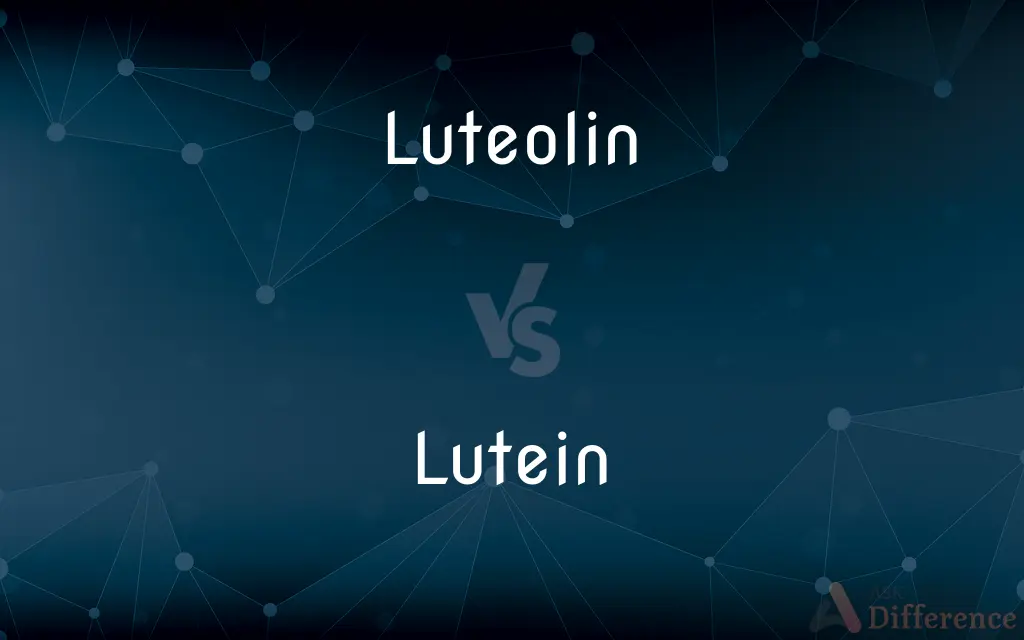Luteolin vs. Lutein — What's the Difference?

Difference Between Luteolin and Lutein
ADVERTISEMENT
Compare with Definitions
Luteolin
Luteolin is a flavone, a type of flavonoid, with a yellow crystalline appearance.Luteolin is the principal yellow dye compound that is obtained from the plant Reseda luteola, which has been used as a source of the dye since at least the first millennium B.C. Luteolin was first isolated in pure form, and named, in 1829 by the French chemist Michel Eugène Chevreul. The luteolin empirical formula was determined by the Austrian chemists Heinrich Hlasiwetz and Leopold Pfaundler in 1864.
Lutein
Lutein (; from Latin luteus meaning "yellow") is a xanthophyll and one of 600 known naturally occurring carotenoids. Lutein is synthesized only by plants, and like other xanthophylls is found in high quantities in green leafy vegetables such as spinach, kale and yellow carrots.
Luteolin
(organic compound) A particular flavone, found in many vegetables, that functions as an antioxidant
Lutein
A yellow-orange xanthophyll carotenoid, C40H56O2, that occurs naturally in green plants and in the fat of plant-eating animals, egg yolk, the corpus luteum, and the retina, and that may help to prevent macular degeneration.
Luteolin
A yellow dyestuff obtained from the foliage of the dyer's broom (Reseda luteola).
ADVERTISEMENT
Lutein
A dried preparation of corpus luteum.
Lutein
(organic compound) A yellow carotenoid pigment, widely distributed in both plants and animals.
Lutein
A substance of a strongly marked yellow color, extracted from the yolk of eggs, and from the tissue of the corpus luteum.
Lutein
Yellow carotenoid pigments in plants and animal fats and egg yolks
Share Your Discovery

Previous Comparison
Twitter vs. Tweet
Next Comparison
Opuntia vs. Tuna














































